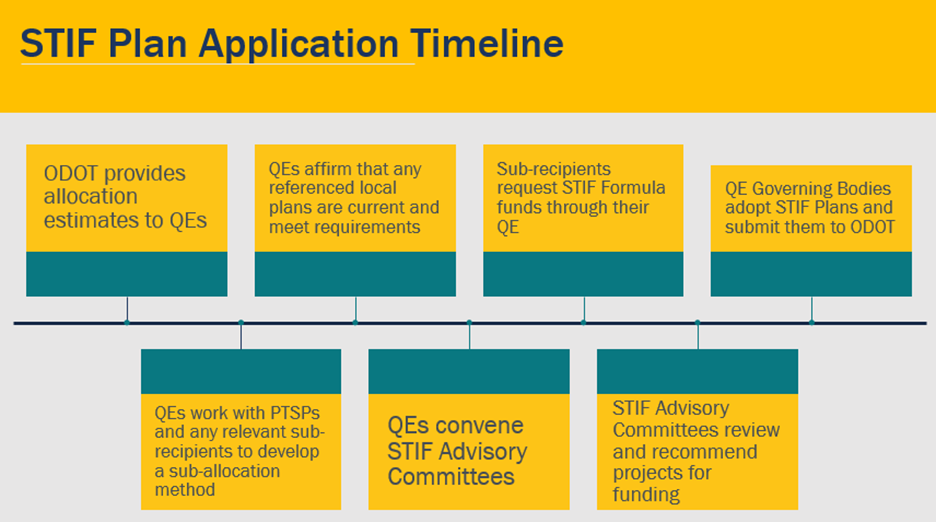The STIF Plan is an electronic form created by ODOT and it serves as the mechanism for accessing STIF Formula funds. Each Qualified Entity shall adopt a written STIF Plan to establish a list of projects for public transportation within its area of responsibility. ODOT staff also publish an electronic form called the Sub-Recipient Project Application for each solicitation cycle. This form is optional but can be an efficient way for Qualified Entities to collect project information from relevant sub-recipients.
The STIF Plan may also be accessed through the Funding Opportunities page under the STIF Formula fund tab. More information about STIF Plan requirements can be found in Oregon Administrative Rule (OAR) 732-042-0015.
STIF Plans may cover either one or two biennia, and they must address the transportation needs of people residing in or traveling into and out of the Qualified Entity’s area of responsibility. A STIF Plan must be approved by the Qualified Entity’s Governing Body before it is submitted to ODOT, and it must also be signed by a person with the authority to enter into legally binding agreements on behalf of the Qualified Entity.
The following guidance documents outline the STIF Formula Fund application process and provide instructions for completing and submitting the STIF Plan.
The major steps in developing a STIF Plan are outlined in the graphic below. This schedule should be used as a guide only as the order of events may vary depending on local process.
